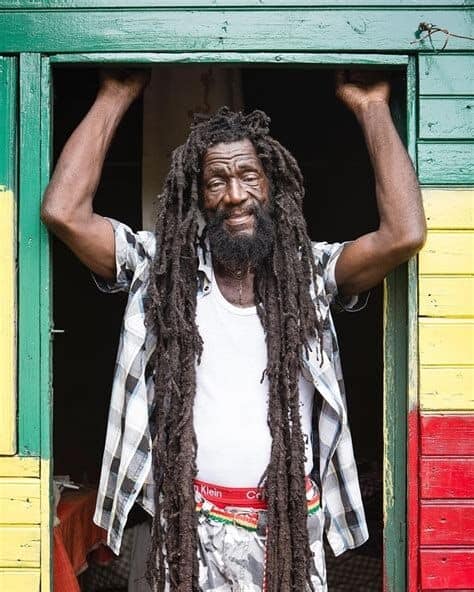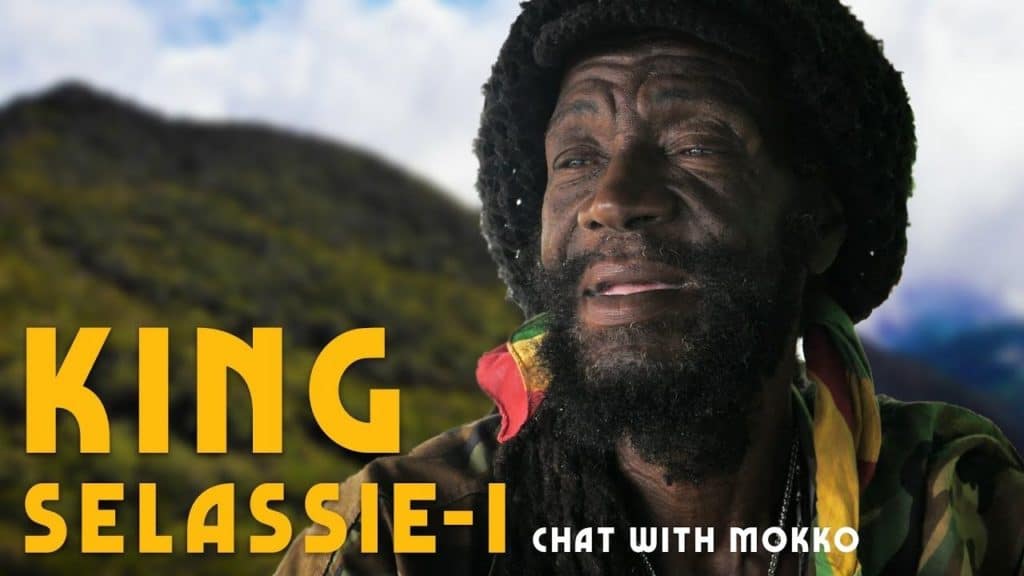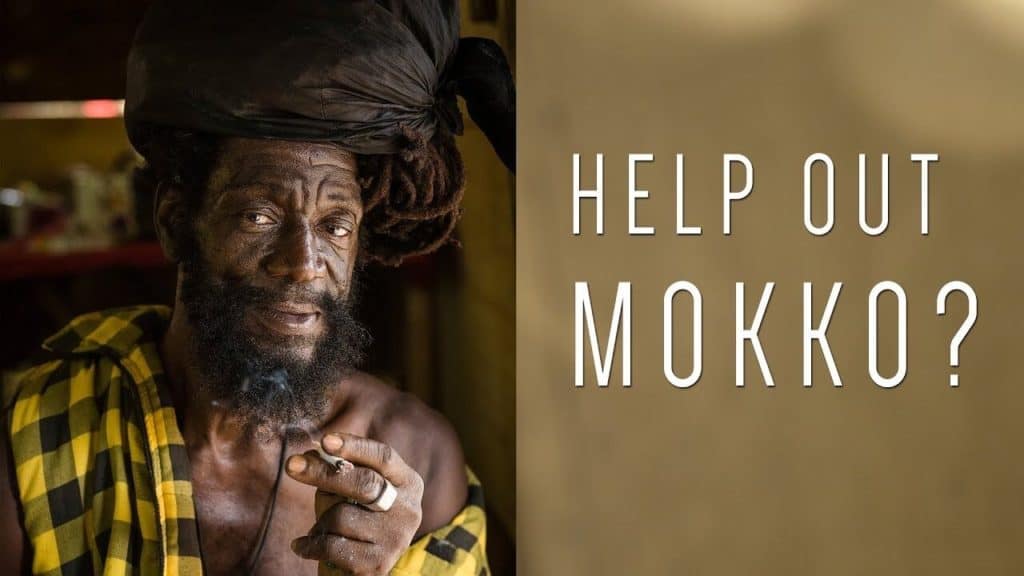Like most people, my introduction to Jamaican music started with Bob Marley, whose aptly titled hits collection Legend set my standard for all other reggae music. Soon after I discovered Peter Tosh, Toots and The Maytals, Black Uhuru, and more.
A family trip to Jamaica in the spring of ‘87 exposed me to the dancehall styles of Admiral Bailey and the sweet, soulful sounds of Gregory Isaacs as well as the incredible vistas and fragrant smells of that beautiful island. Burned into my olfactory memory banks are the scents of salty sea air, woodsmoke, fecund jungle, wild flowers, tropical fruits, sugar cane, rum, and of course ganja.
In the summer of ‘87, I linked up with my long lost cousin Ross in San Francisco for a trip up to the epic Reggae On The River festival deep in Humboldt County where (I think) I saw groups like The Mighty Diamonds, The Itals, and Culture. This experience only deepened my love for Reggae music and Jamaican culture.
Today, I’m glad to say I’ve made some wonderful new discoveries online. It started by seeking out reggae bass lessons on YouTube and coming across excellent instructional videos by Devon Bradshaw, longtime bassist for Burning Spear. Devon is accompanied by top drummer Donovan Miller, who has his own episode featuring essential Reggae beats and grooves. These men have the knowledge and the feel necessary to teach you reggae rhythm!
One of the great things about YouTube is that it often allows you to follow threads to the unexpected. Such was the case when the next video showed Bradshaw and Miller backing up some heavy duty Rasta music led by wizened, dreadlocked elders including Johnny Walker and The Dissappointers with American sax player Henley Douglas Jr.
With documentary-style footage, Walker’s tune “Busy” boasts, “You think you’re busy, you’re not busy like me.” “In The Streets” allows a glimpse of Jamaican streetlife. Also mighty is Jah Youth singing and giving a tour of his jungle farm.
 Filmed in the hills of Nonsuch, Portland, this is all part of a documentary called Reggae In The Ruff and features real Rastafarian musicians named Kultural, Stannie, Splick, FarEye, Bassey, Bushman, Jah Roy, and the aforementioned Johnnie Walker and Jah Youth. Sadly, a few of them have passed on, and searching for the film online only brought up expired links. I’ll keep looking as this promises to be a real situation, like a Jamaican Buena Vista Social Club.
Filmed in the hills of Nonsuch, Portland, this is all part of a documentary called Reggae In The Ruff and features real Rastafarian musicians named Kultural, Stannie, Splick, FarEye, Bassey, Bushman, Jah Roy, and the aforementioned Johnnie Walker and Jah Youth. Sadly, a few of them have passed on, and searching for the film online only brought up expired links. I’ll keep looking as this promises to be a real situation, like a Jamaican Buena Vista Social Club.
Binge watching all of this led me to a fantastic show called Ras Kitchen produced by Matthew Pancer, a young Canadian with an education in media production, artful camera skills, and access to high quality gear that allows him to capture some stunning footage, including spectacular aerial shots of the surrounding countryside.
Going strong since 2010 and now in its 4th season, Ras Kitchen centers around the yard and family life of Rastaman “Mokko” who runs Riverside Cool Cottages, a small cluster of rustic cabins in Sunning Hill in St. Thomas Parish on the eastern end of Jamaica.
Mokko is a mellow fellow, fit and wiry with incredible 45-year-old, seven-foot dreadlocks. In one episode he shows how he keeps them clean by bathing in a nearby river with strawberry shampoo. Once they’ve dried, he neatly tucks them up under a variety of giant, funky hats.
Mokko’s cooking expertise shines brightly as he languidly labors over a smokey open fire on an old oil drum and guides the viewer through a variety of recipes including Ital Stew, Janga (fried river shrimp), Chocolate Tea, Irish Moss, and more.
“Spliff Chats” is a series within the series, where Mokko burns the sacred herb and disperses gentle wisdom. He says, “If you sit down, nothing will come to you. Nobody ought to be surprised. When a man’s time comes, a man’s time comes. This is it! Ya man. Every man have a day, every man have a time. And I tell you, ‘Every hoe ha dem stick a bush!’”
It loosely translates to “Carpe diem, and there is somebody for everybody.”
Luckily for the viewer, all of this is subtitled, for it would otherwise be challenging to understand Mokko’s thick Jamaican patois. He has his own classic expressions like “no fuckery,” which basically means “no fucking around.”
Mokko knows all about every living thing in his yard and their medicinal and dietary properties. He has planted banana, plantain, potatoes, yam, coffee, coconuts, ackee, breadfruit, dasheen, cocoa, soursop, pumpkin, Scotch Bonnet peppers, and more. He cooks Ital food, which is vegetarian, all natural, and from the earth. Though he eats no eat animal protein, he can cook “any kind of food you want” and can be seen preparing fried chicken, fish, and janga (river shrimp) for Matthew in various episodes. “Good for the reptile” (male stamina), he says. All of this is on offer to guests staying at the cottages.
Always running through the yard are a pack of puppies, chickens, and his adorable grandson Rattie, aka “Rat Rat,” who’s ever up to mischief. Other family members flit in and out. Doret, Mokko’s woman, prepares tasty-looking banana fritters in one episode, while his daughter Shannel takes the lead on cellphone shopping on a family trip to the nearby town of Morant Bay. It’s a glimpse into authentic Jamaican life.
Other highlights included hiking to the top of the blue mountains with Rasta Buru, aka Judge Abel, who emparts more Rasta wisdom. “We’re not here to judge, we’re here to listen.” With Mokko by his side, he later performs his excellent tune “High Grade,” praising Jah and extolling the virtues of herb for “the healing of the nation.”
What’s special about this show is Matthew’s relationship with Mokko and his family. The two have a friendly, jovial banter, and Matthew’s sincere desire to capture the real Jamaica comes across.
Stylistically Ras Kitchen’s cinematography is fluid and effective by stitching together candid, handheld footage with more complex drone shots for an organic view of Jamaica, which helps the viewer feel as if they’re there. Ras Kitchen has a funding page for those who want to support this unique show: https://www.gofundme.com/f/helpmokko.
In an episode called “How Ras Kitchen Started,” Matthew explains his original vision to market it as a travel show, his meetings with various networks, and their appreciation but ultimate rejection of the concept. So much the better as the production has a homespun, independent vibe that allows things to unfold in a natural way without interference from network producers. And it seems to be doing quite well on its own. Ras Kitchen airs nationally on Jamaican Flow TV and lives on YouTube with 351,000 subscribers. One can easily imagine the show on Netflix, though if it ever gets there, I hope Matthew and Mokko can keep it real. I believe they will.
Ras Kitchen, Reggae In The Ruff, and Jamaica are filled with real, larger-than-life characters. The depth of personality on display is a huge part of each show’s success. Discovering this fantastic music, cooking, and culture is like cracking open a chest of sunken pirate treasure, a secret waiting to be discovered.
To learn more about Ras Kitchen, Mokko, and Riverside Cool Cottages, check out https://raskitchen.com and http://rastamokko.com. Respect to all the artists and people mentioned in this article. I dream of getting back to Jamaica someday and hope to meet these fine folks in person. Bless up!












2 Comments
Wonderful, evocative and descriptive article all around! Thanks so much for sharing!
Thank you Will! 🙂